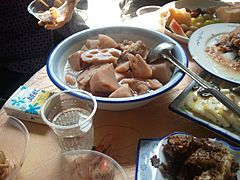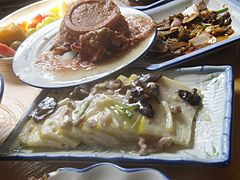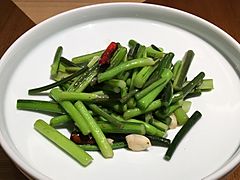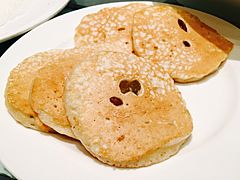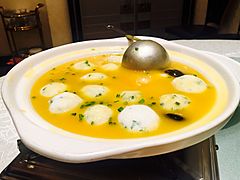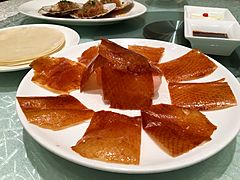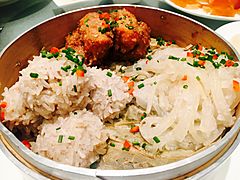Hubei cuisine facts for kids
Quick facts for kids Hubei cuisine |
|||||||
|---|---|---|---|---|---|---|---|
| Chinese | 湖北菜 | ||||||
|
|||||||
| Chu cuisine | |||||||
| Chinese | 楚菜 | ||||||
|
|||||||
Hubei cuisine is a yummy cooking style from Hubei Province in China. It's also called Chu cuisine or E cuisine. It's known for its fresh ingredients and special cooking methods.
Contents
A Taste of History
Hubei cuisine is super old! It has been around for over 2,000 years. People even wrote about its dishes in ancient books. One famous book is called Chuci, written by Qu Yuan.
Fresh Ingredients from Hubei
Hubei Province has many lakes, rivers, and wet areas. This means that fresh ingredients from water are very important. You'll find lots of fish, shrimp, and other water plants. A super important ingredient in many Hubei dishes is the tasty lotus root.
Cooking Styles and Flavors
Hubei cuisine is all about how food looks and tastes. Chefs pay close attention to how they prepare ingredients. They also make sure the colors of the dishes look good together.
One special thing about Hubei cooking is steaming. They are experts at it! The food is often cooked with steam, making it soft and delicious.
Hubei food also gets ideas from its neighbors. Sichuan and Hunan cooking styles influence it. So, Hubei dishes can sometimes be a bit spicy. They use dried hot peppers, black pepper, and other spices to add lots of flavor.
Different Hubei Styles
Hubei cuisine has a few different styles, each with its own special touch:
- Wuhan style: This style is famous for its soups and noodle dishes. A very popular noodle dish is hot dry noodles. Wuhan is also known for "dry pots." These are like hot pots but without the soup.
- Huangzhou style: Dishes from Huangzhou are often a bit more oily. They also tend to taste saltier than other Hubei styles.
- Jingzhou style: This style loves fish dishes. Steaming is the main way they cook fish here.
- Miao people style: This style comes from the southwest of Hubei. The flavors are strong, often sour and spicy.
Popular Hubei Dishes
| English | Traditional Chinese | Simplified Chinese | Pinyin |
|---|---|---|---|
| Three-Delicacy Dried Bean Curd Sheet | 三鮮豆皮 | 三鲜豆皮 | sān xiān dòu pí |
| Hot Dry Noodles | 熱乾麵 | 热干面 | rè gān miàn |
| Fish Cakes and Ball | 魚糕丸子 | 鱼糕丸子 | yú gāo wán zi |
| Mianyang Three Kinds of Steamed Food | 沔陽三蒸 | 沔阳三蒸 | miǎn yáng sān zhēng |
Gallery
Images for kids
-
Freshly made noodles drying in the sun in Futu, Huangshi Municipality


